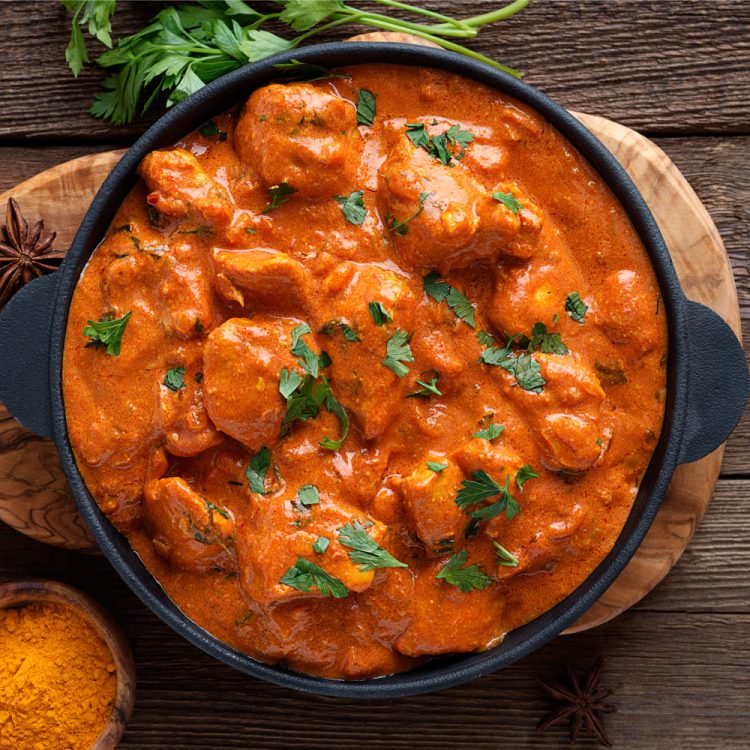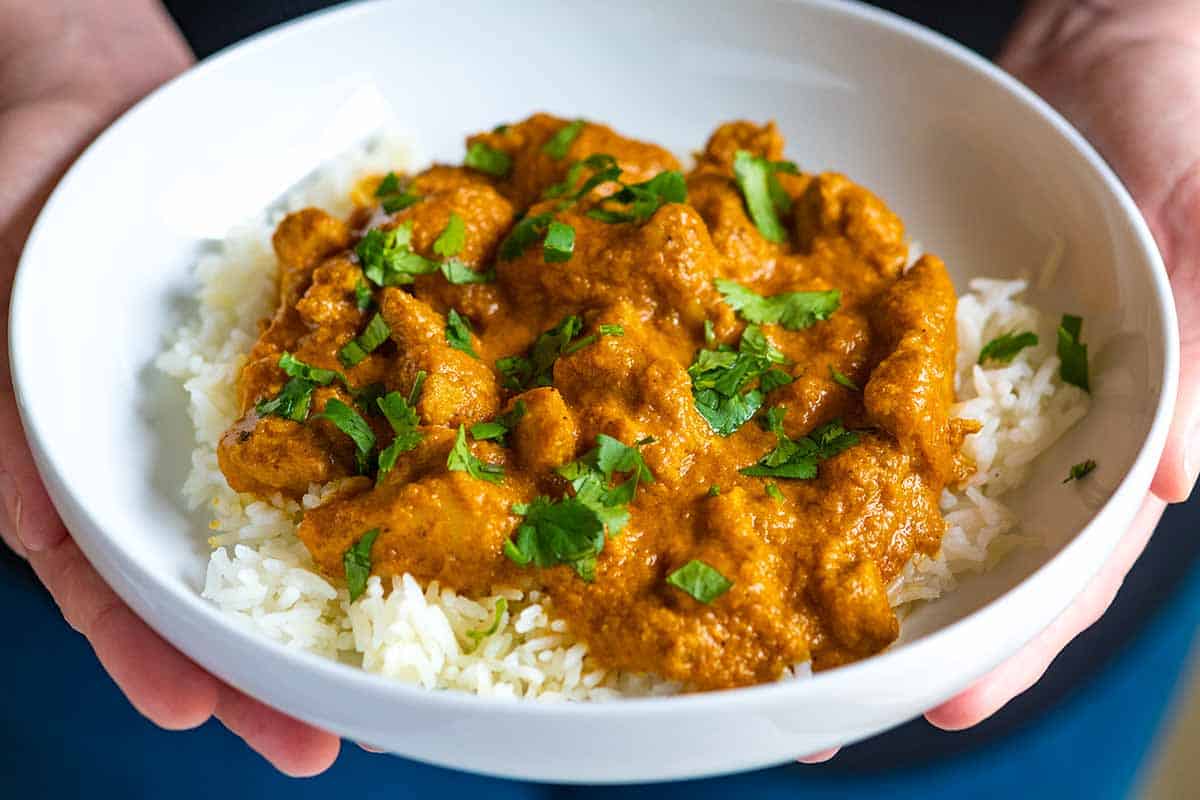Embark on a culinary expedition to the vibrant streets of South India, where the tantalizing aroma of authentic chicken curry fills the air. This beloved dish, steeped in history and cultural significance, is a symphony of flavors that will captivate your taste buds and transport you to the heart of this culinary paradise.
In this comprehensive guide, we’ll delve into the secrets of creating an authentic South Indian chicken curry, exploring the essential ingredients, traditional cooking methods, and regional variations that make this dish a culinary masterpiece.
Introduction
An authentic South Indian chicken curry recipe is a culinary masterpiece that captures the vibrant flavors and aromatic spices of the region. It is a dish steeped in history and cultural significance, a testament to the culinary prowess of South India.
Spices play a pivotal role in South Indian cuisine, adding a symphony of flavors that tantalize the taste buds. From the fiery heat of chili peppers to the earthy warmth of turmeric and the fragrant allure of cumin, each spice contributes its unique character to the dish.
Historical and Cultural Context
The origins of South Indian chicken curry can be traced back centuries, with influences from various cultures and cuisines. The dish has evolved over time, reflecting the region’s rich culinary heritage and cultural diversity. In many South Indian households, chicken curry holds a special place, often served during festivals and special occasions, symbolizing celebration and togetherness.
Ingredients
An authentic South Indian chicken curry is a symphony of flavors, and its ingredients play a crucial role in creating this culinary masterpiece.
Here’s a breakdown of the essential ingredients and their significance:
Chicken
- Boneless, skinless chicken thighs or breasts are preferred for their tenderness and flavor.
- Marinate the chicken in yogurt, spices, and herbs to enhance its flavor and make it more succulent.
Spices
- Cumin, coriander, and turmeric form the holy trinity of spices, providing a warm and earthy base.
- Red chili powder adds a touch of heat, while garam masala gives depth and complexity.
- Ginger-garlic paste is essential for adding pungency and aroma.
Coconut
- Fresh or dried coconut adds a rich, creamy texture and a subtle sweetness.
- Coconut milk is used as a base for the curry, providing a smooth and flavorful sauce.
Other Ingredients
- Onions and tomatoes provide a base for the curry and add sweetness and acidity.
- Curry leaves, green chilies, and cilantro add freshness and a burst of flavor.
- Tamarind paste adds a tangy sourness, balancing the richness of the coconut.
Variations
Some variations of South Indian chicken curry include:
- Adding vegetables like potatoes, carrots, or peas for a more substantial dish.
- Using a different type of yogurt, such as Greek yogurt, for a thicker sauce.
- Substituting coconut milk with heavy cream or cashew paste for a richer flavor.
Preparation

Preparing authentic South Indian chicken curry involves a careful process of marinating, cooking, and finishing. Each step plays a crucial role in developing the dish’s unique flavor and texture.
To ensure success, follow the steps Artikeld below meticulously, paying attention to the techniques and ingredients used at each stage.
Marinating
Marinating the chicken is essential for infusing it with flavor and tenderizing it. Combine the chicken pieces with the yogurt, ginger-garlic paste, turmeric, red chili powder, coriander powder, cumin powder, garam masala, and salt in a large bowl.
Mix thoroughly to ensure the chicken is evenly coated with the marinade. Cover the bowl and refrigerate for at least 30 minutes, or up to overnight for maximum flavor absorption.
Cooking
Once the chicken is marinated, it’s time to cook it. Heat the oil in a large skillet or pot over medium heat. Add the onions and sauté until they become translucent.
Next, add the tomatoes and green chilies and cook until the tomatoes soften and release their juices. Stir in the marinated chicken and cook until it turns golden brown on all sides.
Add the coconut milk and water to the pot and bring to a boil. Reduce heat to low, cover, and simmer for 20-25 minutes, or until the chicken is cooked through and the sauce has thickened.
Finishing
To finish the curry, add the cilantro and adjust the seasonings to your taste. Simmer for a few more minutes, or until the flavors have blended.
Serve the chicken curry hot with rice, roti, or naan bread for a complete and satisfying meal.
Cooking Methods
South Indian chicken curry is traditionally cooked using a variety of methods, each imparting its unique flavor and texture to the dish. The choice of cooking method depends on factors such as the desired texture, the availability of cooking equipment, and the cook’s preference.
The most common methods for cooking South Indian chicken curry are using a pressure cooker, a stovetop, or a tandoor.
Pressure Cooker
- Pressure cookers are a convenient and efficient way to cook chicken curry, as they significantly reduce the cooking time.
- To cook chicken curry in a pressure cooker, brown the chicken in a little oil, then add the spices, aromatics, and liquid.
- Secure the lid and cook the curry on high pressure for 15-20 minutes, or until the chicken is tender and the sauce has thickened.
Stovetop
- Cooking chicken curry on the stovetop is a more traditional method that allows for greater control over the cooking process.
- To cook chicken curry on the stovetop, brown the chicken in a large pot or Dutch oven, then add the spices, aromatics, and liquid.
- Bring the curry to a boil, then reduce the heat to low and simmer for 30-45 minutes, or until the chicken is tender and the sauce has thickened.
Tandoor
- Tandoors are clay ovens that are used to cook a variety of dishes, including chicken curry.
- To cook chicken curry in a tandoor, the chicken is marinated in a yogurt-based marinade, then skewered and cooked over hot coals.
- The high heat of the tandoor cooks the chicken quickly, resulting in a tender and flavorful curry.
Regardless of the cooking method used, the key to achieving the desired texture and flavor in South Indian chicken curry is to use a good balance of spices and to cook the curry until the chicken is tender and the sauce has thickened.
Variations
The South Indian chicken curry recipe boasts regional variations that reflect the diverse culinary traditions of the region. These variations showcase unique combinations of spices, cooking techniques, and ingredients, resulting in a range of delectable flavors and aromas.
Regional Variations
- Chettinad Chicken Curry: Originating from the Chettinad region of Tamil Nadu, this variation is renowned for its bold and spicy flavor profile. It typically incorporates a blend of aromatic spices such as black pepper, cumin, coriander, and fenugreek, along with a generous amount of fiery red chilies.
- Malabar Chicken Curry: Hailing from the Malabar coast of Kerala, this variation is characterized by its use of coconut milk and a blend of aromatic spices, including cardamom, cloves, and cinnamon. The coconut milk imparts a creamy texture and a subtle sweetness to the curry, while the spices add a warm and inviting aroma.
- Andhra Chicken Curry: Originating from the Andhra Pradesh region, this variation is known for its tangy and spicy flavor. It often incorporates tamarind, which adds a sour note to the curry, along with a blend of spices such as turmeric, coriander, and cumin.
Accompaniments
South Indian chicken curry is traditionally served with a variety of accompaniments that complement its bold flavors. These accompaniments enhance the overall dining experience and provide a balance of textures and tastes.
The most common accompaniment to South Indian chicken curry is rice. Steamed rice is a staple in South Indian cuisine and provides a neutral base for the spicy and flavorful curry. The rice absorbs the flavors of the curry, creating a harmonious blend of tastes.
Roti
Roti is another popular accompaniment to South Indian chicken curry. Roti is a flatbread made from whole wheat flour and cooked on a griddle. It has a slightly chewy texture and a mild flavor that pairs well with the richness of the curry.
Paratha
Paratha is a layered flatbread that is made by rolling and folding dough. It is cooked on a griddle and has a flaky and buttery texture. Paratha is a more substantial accompaniment to South Indian chicken curry and can be used to scoop up the curry and its flavorful sauce.
Presentation

South Indian chicken curry is traditionally presented in a copper or brass vessel called a chettinad . The curry is poured into the vessel and garnished with fresh coriander leaves, green chilies, and a drizzle of coconut oil.To
enhance the visual appeal of the dish, consider arranging the chicken pieces in an aesthetically pleasing manner, ensuring they are evenly distributed throughout the curry. You can also add a few colorful vegetable pieces, such as bell peppers or carrots, to add a pop of color and texture.
Serving Suggestions
South Indian chicken curry is typically served with rice, idlis, or dosas. It can also be enjoyed with chapati or naan. To complete the meal, consider serving the curry with a side of raita or chutney.
Closure
As you savor the delectable flavors of your homemade South Indian chicken curry, remember that you’ve not only created a dish but also experienced a rich cultural tapestry. May this culinary journey inspire you to explore the diverse flavors of India and continue your culinary adventures with passion and enthusiasm.
Helpful Answers
What is the significance of spices in South Indian cuisine?
Spices play a pivotal role in South Indian cuisine, adding a vibrant symphony of flavors and aromas to dishes. They not only enhance the taste but also possess medicinal properties, contributing to the overall well-being of those who consume them.
What are the key ingredients in an authentic South Indian chicken curry recipe?
The essential ingredients for an authentic South Indian chicken curry recipe include fresh chicken, a blend of aromatic spices such as turmeric, coriander, cumin, and red chili powder, coconut milk for richness, and curry leaves for a distinct flavor.
What are the different regional variations of South Indian chicken curry?
South Indian chicken curry exhibits regional variations across different states. For instance, Chettinad chicken curry from Tamil Nadu is known for its fiery spice level, while Malabar chicken curry from Kerala is milder and features a coconut-based gravy.
What are the traditional accompaniments served with South Indian chicken curry?
South Indian chicken curry is traditionally served with rice, roti, or paratha. These accompaniments complement the flavors of the curry and provide a satisfying meal.
